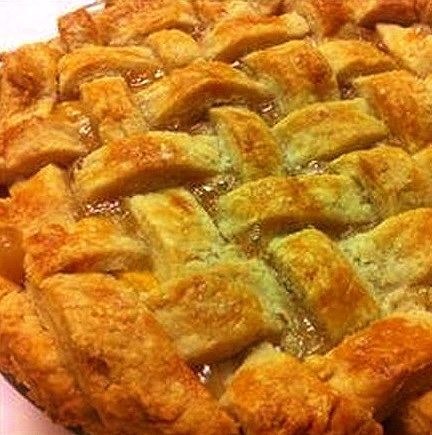Do you love making fresh peach pies, perfectly sweet and sour berry pies, or heavenly pecan pies but find your pie crust is always a bit lacking? Is your pie crust tough, raw at the bottom or does it lack flavor? Here’s five tips for the perfect, flaky pie crust.
#1 — Lard is Best
The best pie crusts are made with lard. The better the lard, the better the crust. Second to that comes vegetable shortening. Butter comes in last. Whatever fat you choose, cold is best. Butter lovers, use that butter if you must but add it to the lard or shortening or brush it on top ten minutes before the bake time is up.
#2 — Keep it Cold
The colder the better. Get whatever fat you’ll be using for your pie crust and stick in in the fridge. Once it’s cold, measure it out and dice it into small squares, about a centimeter or two squared. Now, get all your ingredients together including your flour and tools like the mixing bowl, rolling mat and rolling pin and stick those in the refrigerator. You can even freeze that cubed lard or butter for a couple hours. Yes, you can chill that pie plate too! Water or any added liquid should be as cold as a frosty beer. Yup, put ice in a cup of water and measure that out! Yes you can even stick those pie plates in the fridge before and after you’ve filled them! I’ve found Pyrex glass pie plates to be the best since they heat more evenly, yielding less burnt or overcooked areas. Aluminum works fine too. If you go with metal, reduce baking time by 1-3 minutes.
#3 — Don’t Overdo it
Flakiness is the result of fat and flour/glutenous ingredients staying separate, i.e. not being fully combined. What does that mean? Don’t over-mix! What you’re striving for are tiny bits of fat within the flour. When you pinch the dough, the dough should just stick together and you’ll see a fissures or cracks. In this case, overachievers make the worst pie crust while Lazy Daisy has got it right. Also, add water little by little and combine but go easy on the mixing! Depending on the humidity, elevation and flour you use, the amount of water needed will vary, even from batch to batch. Again, you want the aforementioned consistency so work with that in mind.
4 — Stick to AP or Pastry Flour
Go all out and spend that $8-12 on a bag of proper pastry flour. The low-medium gluten content is perfect for pie crust and yes, you guessed it, pastries! Now if you must you AP (All-Purpose) then add one tablespoon almond meal or cornstarch per cup of flour. Though not as ideal as pastry flour, this easy “conversion” will give your AP pie crust more flake and less of a chewy texture. Now is sifting essential? Answer: YES! No, I’m not a fan of having to log out grandma’s sifter but it makes a big difference! Aerating the flour enables a better combination of ingredients and also adheres to most recipe standards, meaning you’ll actually be following the recipe. A baker friend of mine suggests combining all the dry ingredients together in a dry bowl, covering with a plate and shaking them together prior to sifting. This will do a better job of combining all your dry ingredients meaning you’ll have to work the dough less once the fat and water are introduced.
5 — Give it a Rest
Once you’ve got your pie crust combined, divide into segments if necessary, roll into a ball and wrap tightly in plastic wrap. Refrigerate for a minimum of one hour and as long as 24 hours. Remove 30 minutes prior to use to let the pie crust return to room temperature. With your rolling pin, roll out from the center of the dough to the edges. Optimum thickness is about 3.5 millimeters or about the same thickness as two quarters on top of one another. If you prefer a lighter crust, you can go slightly thinner for the top.
DEPENDABLE PIE CRUST
Dry Ingredients:
2 1/2 cups pastry flour (preferably King Arthur Perfect Pastry Flour)
1 1/2 teaspoons granulated sugar
1 teaspoon regular table salt
Wet Ingredients:
1/4 cup (1/2 stick) chilled unsalted butter, cut into 1/2-inch cubes
3/4 cup chilled lard, cut into small squares
5 tablespoons (approx) ice water
Sift half of the dry ingredients into large, preferably glass mixing bowl. Add one-half the lard and one-half butter. Add one tablespoon cold water. Combine with hands. Add an additional one-quarter dry ingredients, add one-quarter more lard and butter. Add one tablespoon cold water. Combine with hands. Repeat with remaining ingredients.
Shape into ball or thick column. Wrap tightly in plastic wrap. Refrigerate.
Tips on blind-baking can be found at this post.
Happy Baking Everyone!





